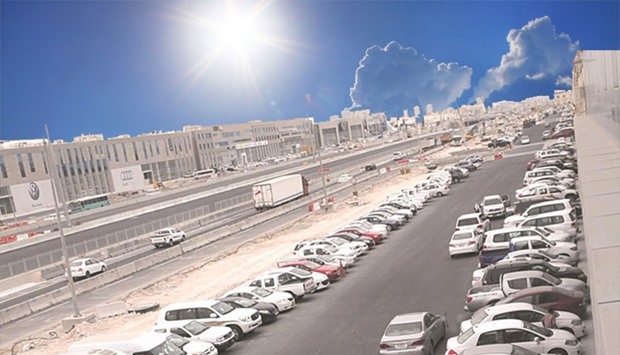Director of Paediatric Emergency Services at HMC, Dr. Khalid al-Ansari, advised that since most children are out of school during this time and interested in playing outdoors, most of their activities should be limited to air-conditioned or shaded areas.
He also stressed that children should not be left by themselves in cars parked out in the sun as it can result in heat stroke.
“Some parents tend to leave their children unattended in vehicles parked outside under the sunlight without realising that the time that is required for anyone to get heat exhaustion or heat stroke in the car is much faster,” he said adding that children below four years are at higher risk of heat stroke and heat exhaustion when they go out in hot weather as they cannot perspire actively like adults.
“If you park your car in the sun for around 10 minutes, the temperature inside the car can rise by up to 10 degrees. It gets higher as time passes by. If a child is left behind in such vehicle, he/she can easily develop heat exhaustion and that can result in heat stroke, which can be life-threatening,” Dr. al-Ansari noted.
“If parents need to do something outside their vehicles, they should always take their children with them. If there are adults attending to the children, it’s okay, provided that the air conditioner is turned on,” he stressed, while adding that, “leaving children unattended with the air conditioner on in the car is equally dangerous.”
“Carbon-monoxide from the car exhaust can come out through the air conditioner vents and whoever is in the vehicle can suffocate from carbon-monoxide poisoning,” he warned.
Dr. al-Ansari explained that the danger signs of heat illnesses to look out for are dizziness, tiredness, muscles cramps, difficulty in breathing and racing heart rate.
“The action to take in this situation is to get the affected child out of the hot area. Take him or her to an air-conditioned area. Have them lie down, and start providing them with plenty of cold fluids to cool down,” he suggested.
He noted that it will be helpful to remove thicker clothes and leave only light clothing on while also applying cold compresses on the body as needed in order to bring the temperature down gradually.
“Usually within 30 to 45 minutes, the person should feel better. If the heat exhaustion continues and those symptoms described were not attended to promptly, the heat exhaustion will become heat stroke with body temperature reaching as high as 40 degrees or more,” he warned.
Dr. al-Ansari explained that the patient might start losing consciousness, experience fainting, and seizure activity and can even go into a coma. “If that continues, the blood pressure will drop and the person can die,” he emphasised.

If you park your car in the sun for around 10 minutes, the temperature inside the car can rise by up to 10 degrees
Hamad Medical Corporation (HMC) has reminded Qatar residents to observe precautions and safeguard themselves, especially children, against heat exhaustion and heat stroke throughout the hottest summer months.


